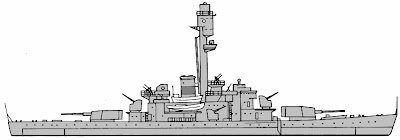One aspect of naval warfare that has always interested me is coastal defence, whether it be land-based or specially-designed coastal defence ships. The Royal Navy did build some armoured coastal defence ships during the later part of the nineteenth and early years of the twentieth centuries, but it was the Baltic navies that built significant numbers of these ships.
(I have always considered that the monitors built and used by the Royal Navy during the First World War were coastal offence ships rather than coastal defence ships, but that the main difference between the two types of ship was the role for which they were originally designed rather than the use that they were actually put to.)
These Baltic armoured coastal defence ships included:
Norway:
Sweden:
(I have always considered that the monitors built and used by the Royal Navy during the First World War were coastal offence ships rather than coastal defence ships, but that the main difference between the two types of ship was the role for which they were originally designed rather than the use that they were actually put to.)
These Baltic armoured coastal defence ships included:
Norway:
- Tordenskjold-class (1897)
- Tordenskjold
- Harald Haarfagre
- Eidsvold-class (1899)
- Eidsvold
- Norge
- Bjørgvin-class (1914)
- Bjørgvin
- Nidaros
Sweden:
- Svea-class (1886)
- Svea
- Göta
- Thule
- Oden-class (1896)
- Oden
- Thor
- Niord
- Dristigheten-class (1900)
- Dristigheten
- Äran-class (1902)
- Äran
- Wasa
- Tapperheten
- Manligheten
- Oscar II-class (1905)
- Oscar II
- Sverige-class (1917)
- Sverige
- Gustav V
- Drottning Victoria
- Herluf Trolle-class (1899)
- Herluf Trolle
- Olfert Fischer
- Peder Skram
- Admiral Ushakov-class (1895)
- Admiral Ushakov
- Admiral Seniavin
- General Admiral Graf Apraksin
- Väinämöinen-class (1931)
- Ilmarinen
- Väinämöinen


































Suitable for a KS or something with the portable wargame perhaps?
ReplyDeletethere's a book on the history of coastal defence vessels, "From Monitor to Missile Boat" just full of lovely pictures; and Paper Shipwright has a number of card models in his range.
ReplyDeleteConrad Kinch,
ReplyDeleteVery suitable indeed.
All the best,
Bob
Joppy,
ReplyDeleteIt is an excellent book, and I have a copy on my bookshelves.
All the best,
Bob
I'm glad i found this post - I have always been strongly fascinated by these ships; built to fight a littoral war as the heavyweights, battles where the first-class ocean-going battleships of the Great Powers' navies did not belong and were neither usable nor secure. The 'inland sea' of the Netherlands, behind the Frisians, and the Baltic archipelago of Sweden, the shallows of Denmark and the fjords of Norway; all were perfect for application of these diminutive, tough and hard-punching combatants at the turn of the century.
ReplyDeleteOne really interesting thing I note about these excellent designs, is that in recent years there has been a noticeable shift towards calling them 'coastal defence ships'. When they were in use, the term used in publications such as Jane's and Brassey's was 'coast defence ship', or else the metaphorical 'coastal battleship' (for true battleships they certainly were not, hardly even of the third rank). Oddly, Paloczi-Horvath is inconsistent and uses both variations, while some other mid-late 20thC works do also. But in the last ten years, there's been a standardisation to the 'new' form, which Wikipedia adopted arbitrarily in the late Noughties.
Fascinating.
Andrew Givens,
DeleteWhilst writing a chapter for THE PORTABLE IRONCLADS WARGAME it struck me how important so-called littoral warfare has been. Even during the age of sail, enforcing or breaking a close blockade was a primary task for most navies. Once steam came along, the larger navies began to build specialist coastal warfare vessels, and smaller navies saw them as a way of acquiring vessels with large guns at low cost to defend their coasts.
It’s interesting to note that the Royal Navy’s pre-dreadnoughts evolved from their steam-powered coastal defence ships whilst their armoured cruisers were a natural evolution from their steam-powered broadside and central battery ships.
All the best,
Bob